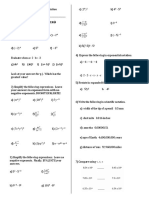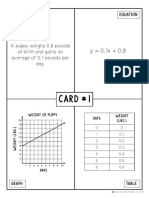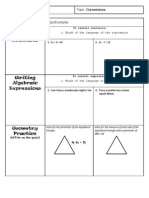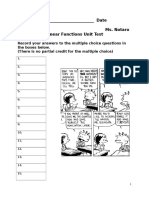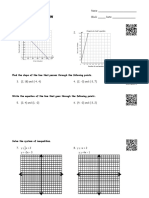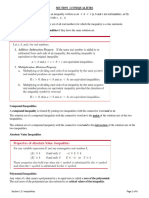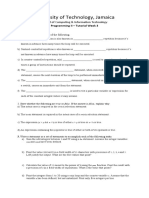0% found this document useful (0 votes)
105 views9 pagesSolving Equations Study Guide
This study guide provides a comprehensive overview of solving equations, including definitions of key concepts such as variables, expressions, and equations. It outlines the basic steps for solving equations, including identifying the equation, simplifying both sides, using inverse operations, solving for the variable, and verifying the solution. The guide also includes examples, practice problems, and advanced applications to reinforce understanding.
Uploaded by
Oshandith Lochana WinschesterCopyright
© © All Rights Reserved
We take content rights seriously. If you suspect this is your content, claim it here.
Available Formats
Download as PDF, TXT or read online on Scribd
0% found this document useful (0 votes)
105 views9 pagesSolving Equations Study Guide
This study guide provides a comprehensive overview of solving equations, including definitions of key concepts such as variables, expressions, and equations. It outlines the basic steps for solving equations, including identifying the equation, simplifying both sides, using inverse operations, solving for the variable, and verifying the solution. The guide also includes examples, practice problems, and advanced applications to reinforce understanding.
Uploaded by
Oshandith Lochana WinschesterCopyright
© © All Rights Reserved
We take content rights seriously. If you suspect this is your content, claim it here.
Available Formats
Download as PDF, TXT or read online on Scribd
/ 9








